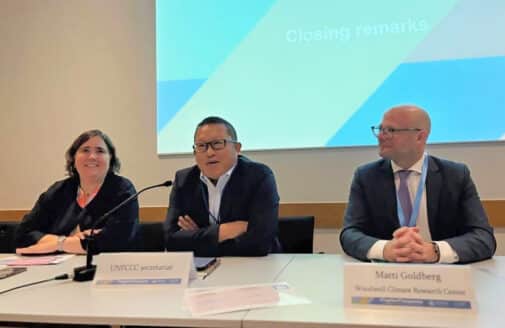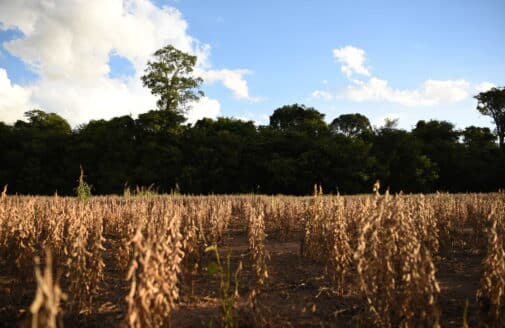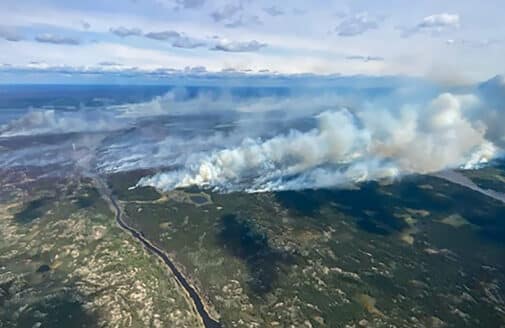Woodwell women in STEM
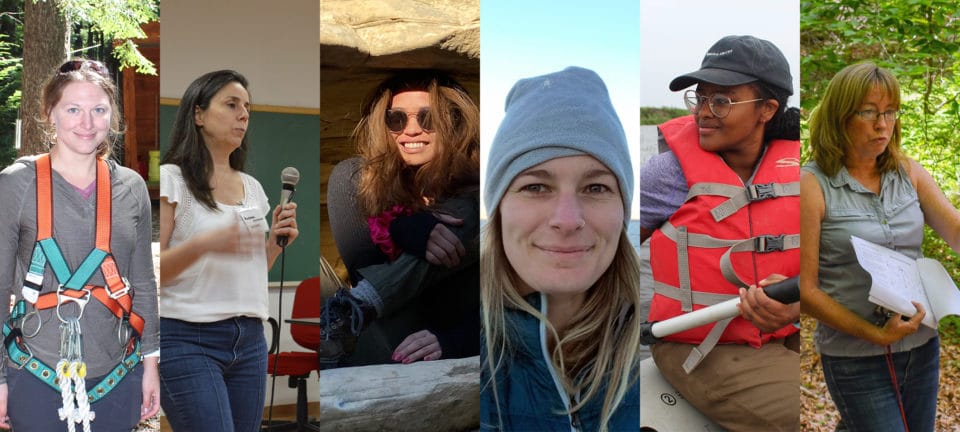
Despite great strides towards educational and employment equity, women today account for only 28% of the STEM workforce. Among the many barriers women face are lack of role models in the field and limited awareness of the diverse ways in which STEM careers can unfold.
“People often focus on one path through science – from PhD into academic science,” explains Chief Communications Officer Dr. Heather Goldstone. “But there are far more opportunities than that. There’s not just one way to be a woman in science.”
Women at Woodwell Climate are paving various pathways into the scientific world. Through outreach and mentorship, Woodwell Climate supports women at various stages of their scientific careers. This Women’s History Month, scientists and staff spoke about their experiences in climate science.
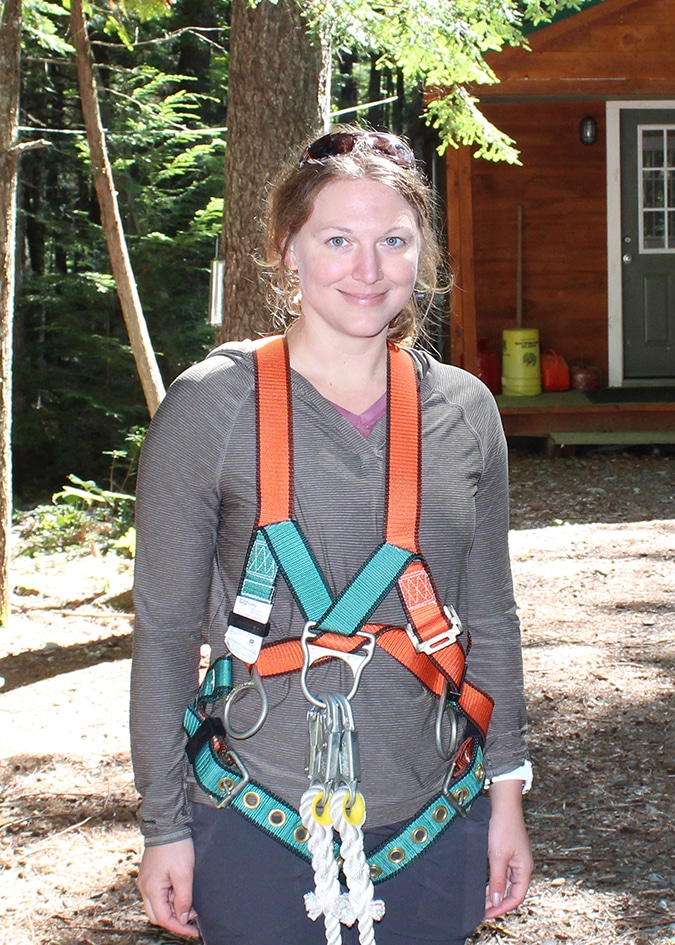 Dr. Watts ready to climb the Howland Forest flux tower. / photo by Miles Grant
Dr. Watts ready to climb the Howland Forest flux tower. / photo by Miles Grant
Dr. Jennifer Watts
Dr. Jennifer Watts always knew she wanted to become a scientist. Growing up in Minnesota, Watts was fascinated by agriculture and the environment from a young age. During high school, Watts worked at a USDA soil lab, gaining experience in the field before transferring to a community college during her senior year to gain access to science classes not offered in her district.
“I always knew that I had the desire to be a scientist,” says Watts. “It was difficult at that point in my life because I didn’t have the resources. I didn’t have a lot of role models who could guide me through the process.”
Now, as a key member of the Woodwell Climate Arctic team, Watts serves as that role model for many young scientists. Combining fieldwork with remote sensing, Watts tracks climate change driven landscape changes and carbon emissions in the Arctic-boreal region.
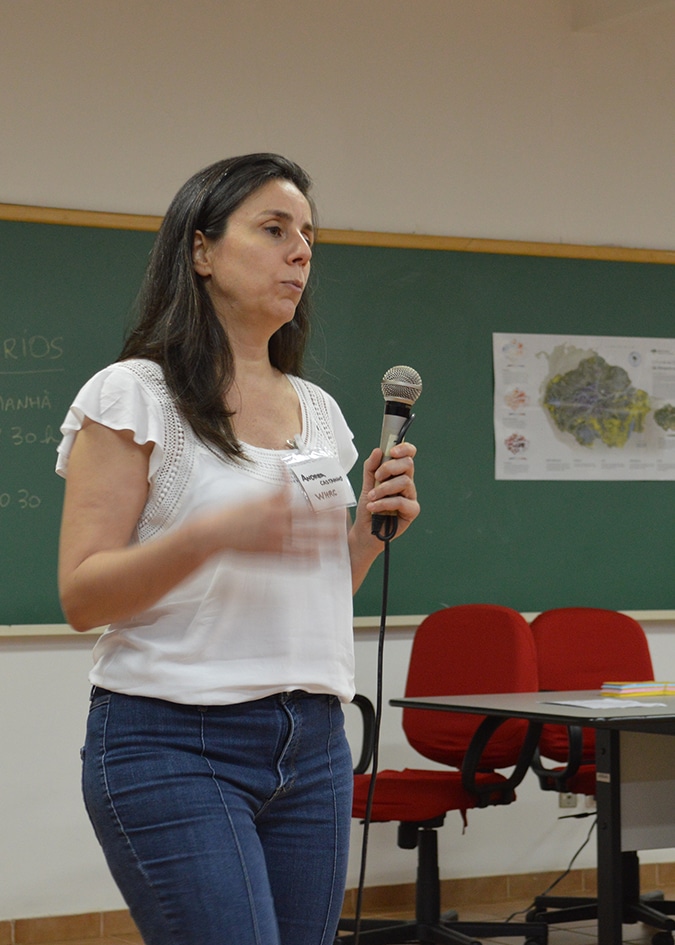 Dr. Castanho leading a workshop session on using data to project climate change impacts in Brasilia, Brazil in 2019..
Dr. Castanho leading a workshop session on using data to project climate change impacts in Brasilia, Brazil in 2019..
Dr. Andrea Castanho
Dr. Andrea Castanho also pursued a career in science against many odds. While her family expected her to become an engineer, she insisted on pursuing physics as an undergraduate as well. Castanho decided to let passion inform her work and guide her research, applying physics to environmental questions. Originally from Brazil, Castanho took time off after completing her postdoctoral research in Boston. Eventually, she came to realize that the work brought her genuine fulfillment, and returned to the scientific community which welcomed her with open arms.
Her main research interest is to understand the impact of climate change in tropical forests. Studies have shown that the climate in the Amazon and Caatinga (a seasonally dry tropical forest in a semiarid region in northeast of brazil) is changing. Using global climate models, Castanho wants to understand how the predicted future climate scenarios can affect the remaining tropical forests. She also investigates the impact of land use change on global carbon flux measurements.
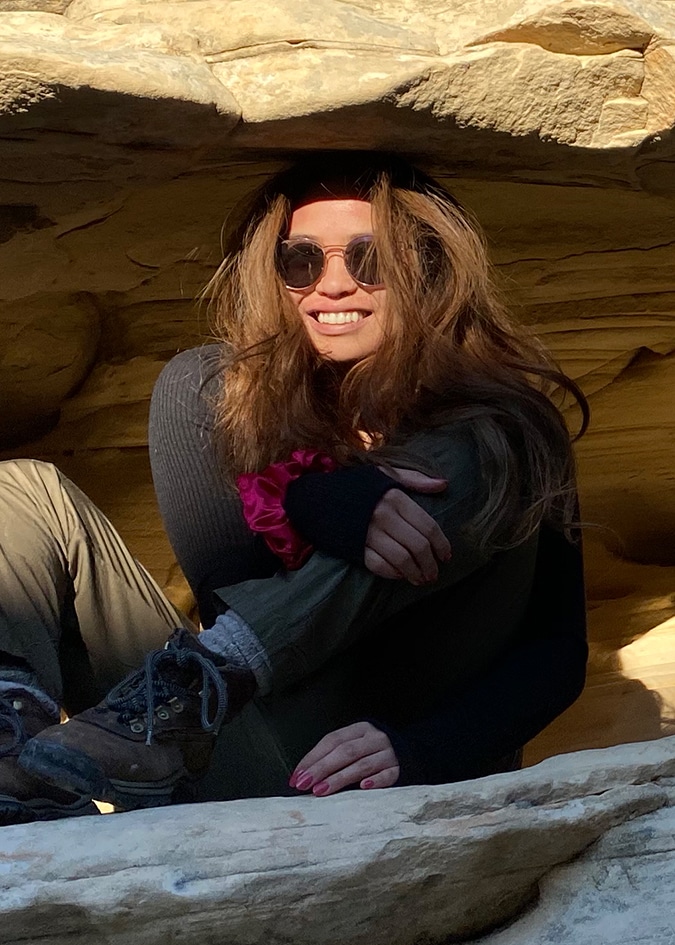
Monica Caparas
Similarly, Monica Caparas took a non-linear path to her position as a Woodwell Climate research assistant. As a first-generation college student, Caparas did not have any frameworks for preparing for a career in scientific research. It was not until modeling effects of climate change on the global water cycle with her undergraduate mentor that Caparas began to imagine a scientific career. “Going into college, I didn’t know what research was. Even today, I’m still learning what the career – and life- of a researcher can look like and what I want it to be for myself,” Caparas explains.
After majoring in mathematical geophysics, Caparas returned home to Las Vegas to become a professional dancer and aerialist. After a few years, she found that she missed working with climate models and belonging to a scientific community. Returning to the work she began as an undergraduate, Caparas now utilizes climate models to project global water scarcity and changes in agricultural yield as a part of the Woodwell Climate Risk team.
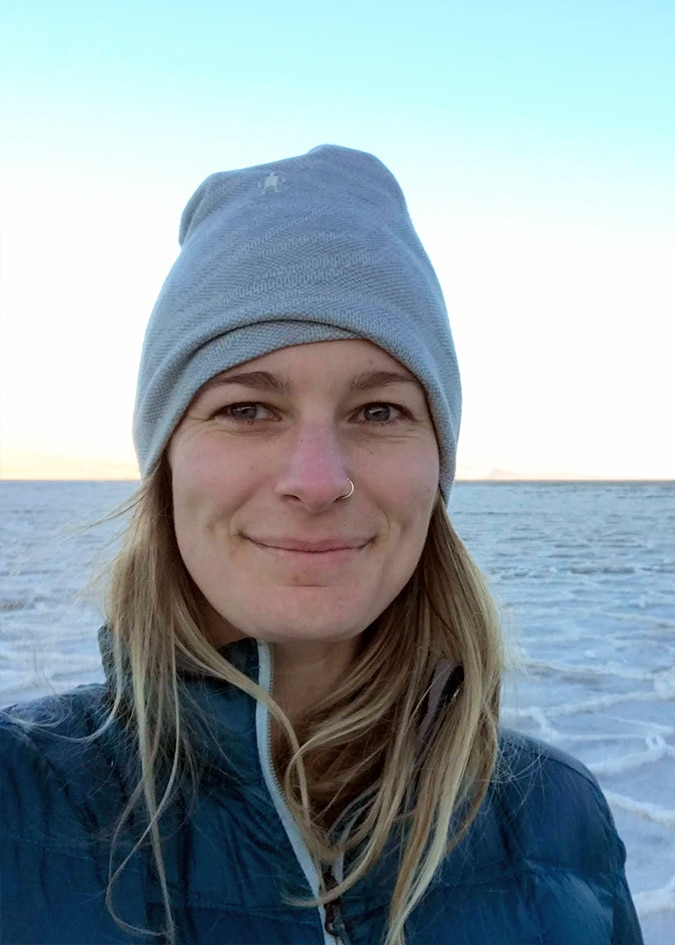
Dr. Alex Naegele
Like Caparas, Dr. Alex Naegele did not transition straight into the professional science world after graduation. Naegele served in the Peace Corps in rural Morocco, developing community-based climate change adaptation strategies. She collaborated with many local and international organizations to understand the direct impact of climate change, which led her to further pursue science-based solutions as a member of Woodwell’s Risk team. “There was a gap between the science and the community side of things,” Naegele explains.
This experience brought climate justice to the forefront of Naegele’s work and mind. For Naegele, climate resilience planning requires an understanding of how society both impacts and is impacted by climate change. She is grateful for her experience working directly with those affected by the physical hazards that climate change poses, as this work solidified her belief that climate change is an intersectional issue requiring intersectional and interdisciplinary solutions.
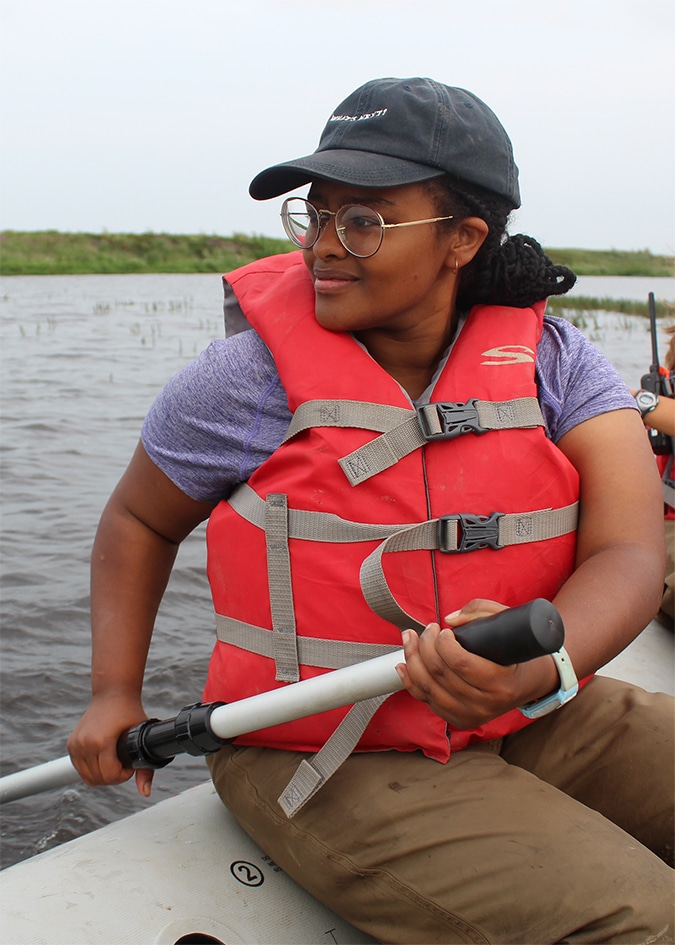 Natalie Ballairgeon in the field as a Polaris Project student in 2019.
Natalie Ballairgeon in the field as a Polaris Project student in 2019.
Natalie Baillargeon
External Affairs Coordinator Natalie Baillargeon also hopes to bridge the gap between the physical and societal impacts of climate change. Baillargeon began her journey as a scientist as a Polaris Project student in 2018 and 2019. Before heading out to the field in her second year, she interned with the Woodwell Communications team, writing policy briefs and drafting social media copy. “That summer was paramount for me because I got to not only be a scientist and conduct fieldwork, but I also got to be a science communicator and policy advocate,” Baillargeon explains.
In developing both research and communication skills, Baillargeon is preparing to provide economic, ecological, and policy-based solutions. She believes that the multifaceted nature of climate change requires an all hands on deck approach. The polarization and politicization of science hurts everyone, though often disproportionately impacts low-income communities and people of color. Baillargeon’s unique position and experience allows her to approach climate change from many different angles, and she encourages others to think similarly.
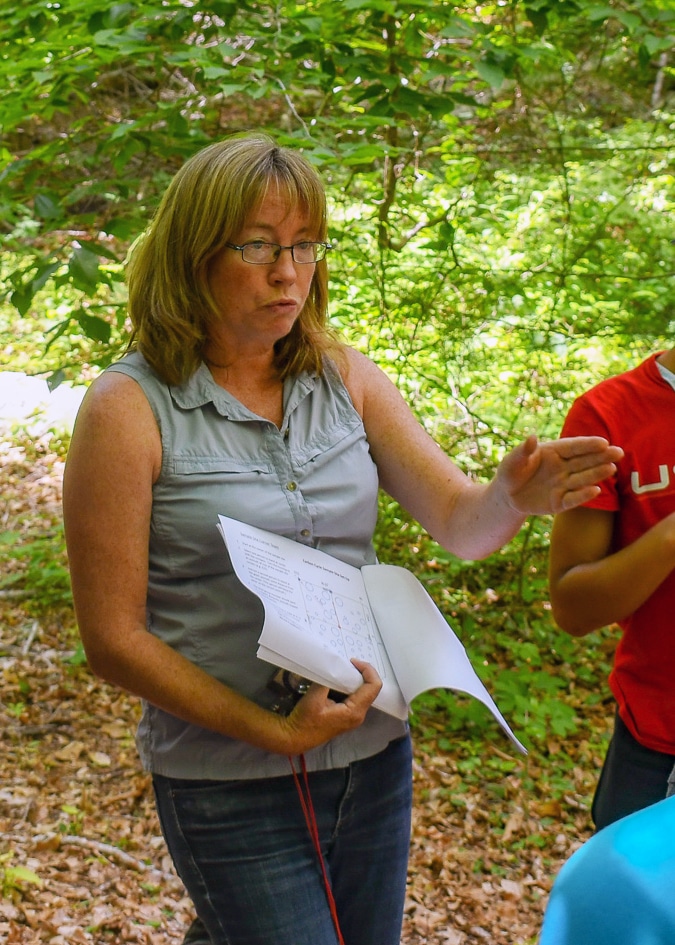 Kathleen Savage working with Woods Hole Partnership Education Program (PEP) students.
Kathleen Savage working with Woods Hole Partnership Education Program (PEP) students.
Kathleen Savage
Intersectional solutions and tools lay at the heart of research associate Kathleen Savage’s work. After studying boreal and temperate forest greenhouse gas fluxes in the Northeast and Canada, Savage began collaborating with other scientists to employ research methods that she now utilizes in forests across the world.
Savage has developed methodologies for continuous greenhouse gas flux measurements and data quality protocols, which she has taught to scientists and students as far away as the Democratic Republic of the Congo. Savage does not believe the strict PhD pathway is necessary to contribute meaningfully to climate science. “Climate science consists of many little pieces of a puzzle and everyone can do their part to contribute to the overall picture,” says Savage.
At all stages of their career, the women of Woodwell Climate Research Center are exploring and making space for new possibilities in the scientific world. Instead of a linear path through science, they present the potential for exploration.





